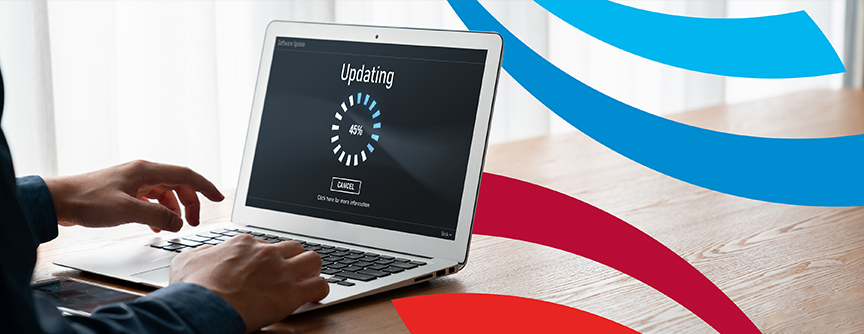As Cybersecurity Awareness Month wraps up, we highlight one of the simplest yet most effective steps in protecting our digital environments: regularly updating software. Regular software updates are essential to defend against evolving cyber threats, acting as a barrier that keeps out malicious actors looking to exploit security gaps. The Cybersecurity and Infrastructure Security Agency (CISA) emphasizes that timely updates are the best defense against common cyber risks.
Consequences of Not Updating Software On-Time
When developers release updates, it’s often because they’ve identified vulnerabilities in their software. These updates include security patches that correct potential flaws and safeguard against breaches, malware, and unauthorized access. A well-known example is the 2017 WannaCry ransomware attack, which exploited a vulnerability in older Windows versions.
Microsoft had released a patch two months prior, yet organizations that hadn’t applied the update remained exposed, leading to widespread damage. In another major incident, Equifax’s 2017 data breach, a security flaw in an outdated version of Apache Struts, left millions vulnerable. The real-world consequences were clear: organizations and individuals pay a high price when software isn’t up to date.
Beyond security, software updates bring performance enhancements, new features, and better compatibility. Consider smartphone updates—each one may contain better battery management, a cleaner interface, or helpful new tools. These improvements only benefit users who consistently keep their software up to date.
Whether it’s a smartphone, business software, or a home device, maintaining the latest updates is crucial. Putting off updates can seem harmless but can lead to severe issues. In our daily routines, delaying a banking or email app update may mean missing the latest security measures, leaving personal information at risk. Banks and other organizations often roll out frequent updates to protect client data, underscoring the need for all of us to keep our software current.
By Staying Up to Date on Software, We Can Maintain a Safer Digital Future
The best way to stay secure is to enable automatic updates where possible, ensuring all systems are up to date without needing to remember. For essential business tools, designate a time weekly or monthly to check for updates and apply them promptly. By making software updates a regular habit, we collectively build a stronger defense against cyber threats and contribute to a safer, more resilient digital environment.
Updating software may seem like a small step, but it’s a proactive move in our cybersecurity strategy. Every update helps secure our systems and protects against evolving risks. Act today to keep your devices, data, and digital environment secure. Visit the Cybersecurity and Infrastructure Agency’s resources on updating software to learn more.
The consequences of falling for a phishing attempt can range from financial losses to reputational damage and compromised security. Being able to identify these schemes is crucial.



